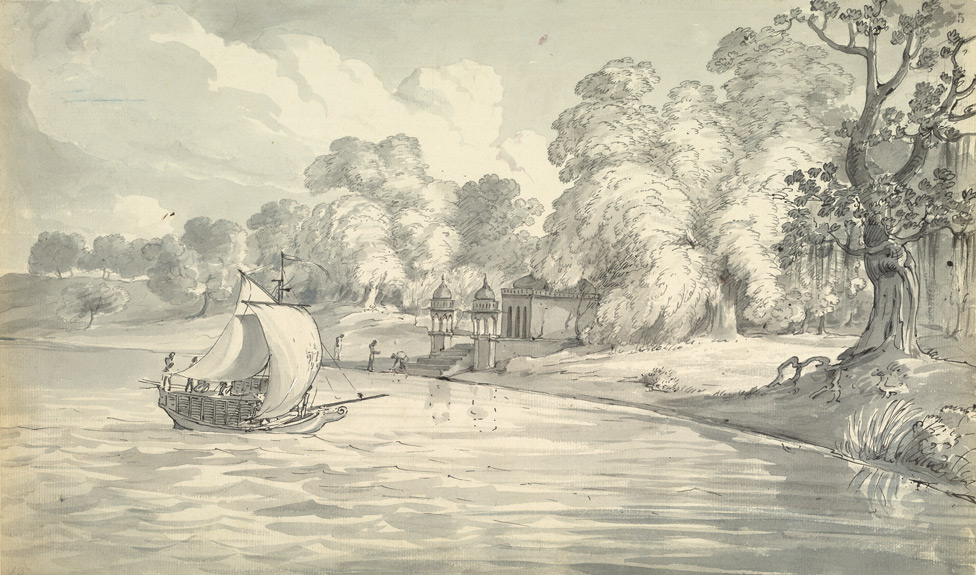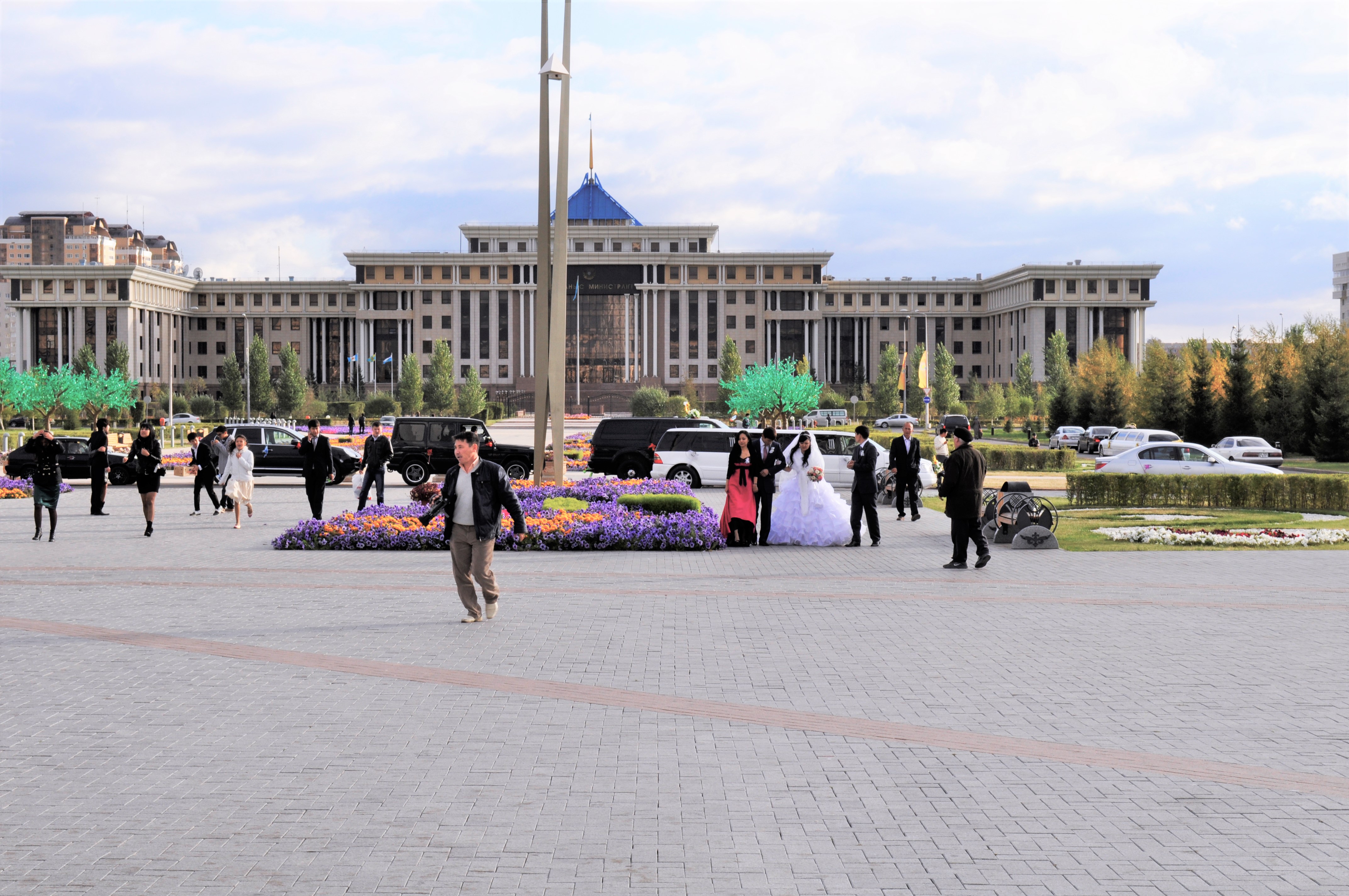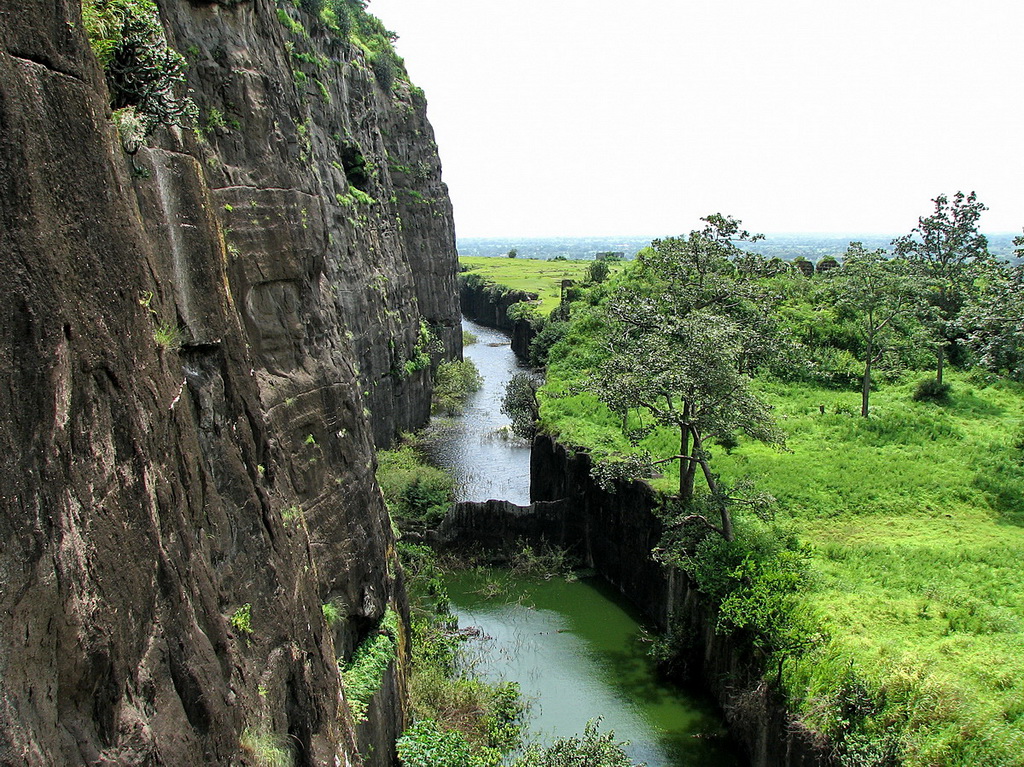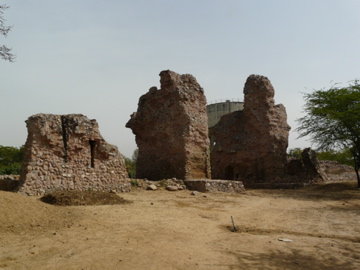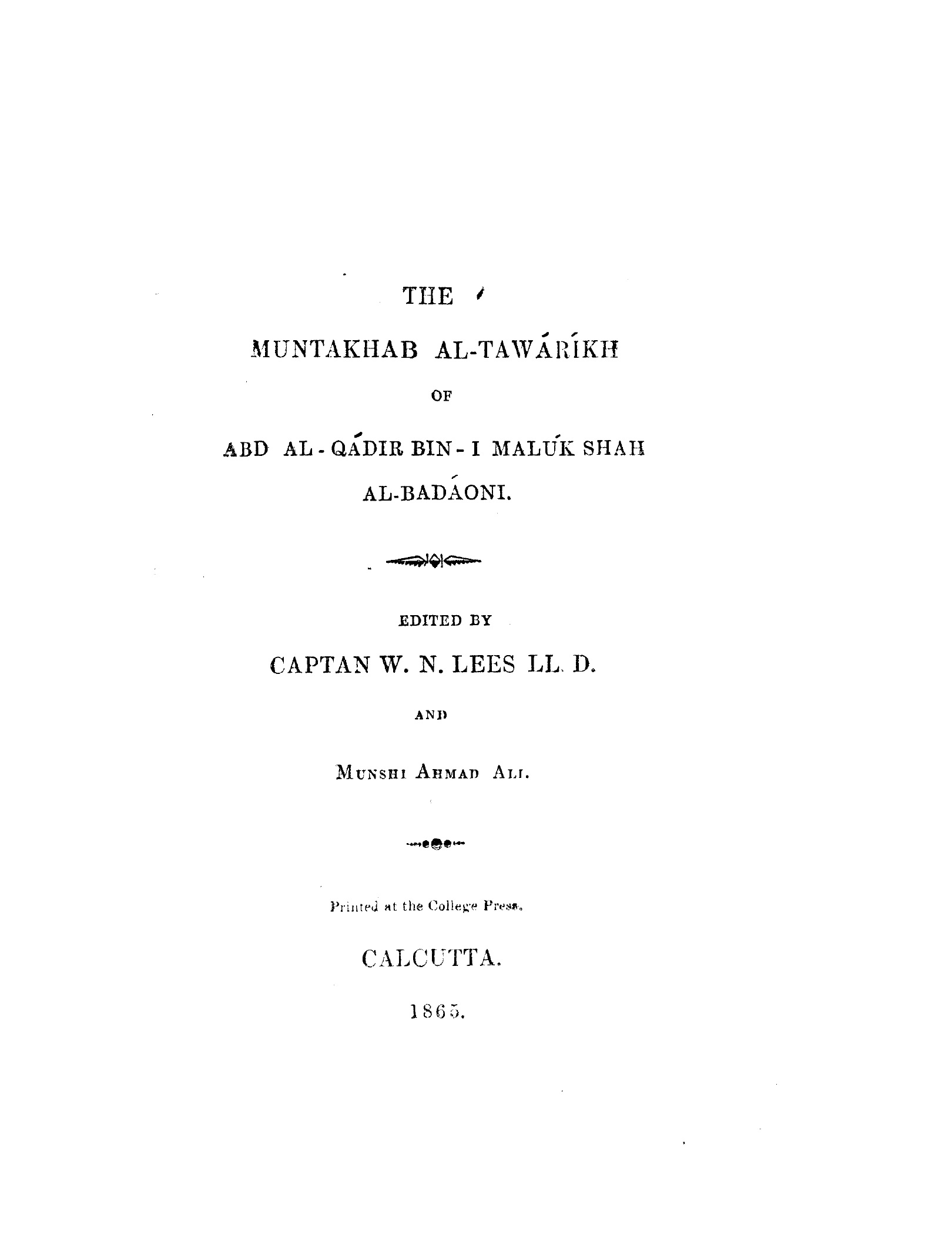|
Alauddin Khalji's Raid On Bhilsa
As a general of Sultan Jalaluddin, Alauddin Khalji (then known as Ali Gurshasp) raided the Paramara city of Bhilsa in 1293 CE. He damaged the city's Hindu temples, and looted a large amount of wealth. Background Alauddin Khalji was the governor of Kara in Sultan Jalaluddin's Delhi Sultanate. Although he feigned allegiance to the Sultan, he was determined to dethrone Jalaluddin, and sought to raise money for a successful coup. Towards this objective, he decided to target Bhilsa, a wealthy city in the Paramara kingdom of Malwa. By the 1290s, the Paramaras had been weakened by Chahamana, Vaghela, and Yadava invasions. In late 1292 CE, Alauddin Khalji obtained the Sultan's permission to raid Bhilsa. The raid In 1293 CE, Alauddin marched towards Bhilsa via the Chanderi-Ujjain road. His sudden attack took the city's residents by surprise. The town had several richly-endowed Hindu temples, from which Alauddin obtained a large amount of wealth, including precious metals an ... [...More Info...] [...Related Items...] OR: [Wikipedia] [Google] [Baidu] |
Kara, Uttar Pradesh
Kara is an old township situated near Sirathu, on the banks of river Ganges, west of the city of Prayagraj in Kaushambi district in Uttar Pradesh state in India. It was capital of a very big region for centuries under the Delhi Sultanate and Jaunpur Sultanate rule. Name It has been sometimes spelt at Karrah, Kada and Kurrah but actually it is Kara (in Hindi कड़ा and Urdu کڑہ ) and often called with its sister town across the river Ganges, Manikpur. To this day, it is called Kara-Manikpur. Kara falls in Kaushambi district while Manikpur has now become a part of Pratapgarh district. Overview Centuries ago it was the seat of the Governor of the ''Sirkar of Kara'' ("the Province of Kara"). Between the 7th century and the 16th century it retained its charm and importance as the capital, but in 1583, the Mughal emperor Akbar made Allahabad the capital and thus reduced Kara to a subdivision of the province. During British Rule, Allahabad gained so much importance th ... [...More Info...] [...Related Items...] OR: [Wikipedia] [Google] [Baidu] |
Ujjain
Ujjain (, Hindustani language, Hindustani pronunciation: Help:IPA/Hindi and Urdu, [ʊd͡ːʒɛːn]) is a city in Ujjain district of the States and territories of India, Indian state of Madhya Pradesh. It is the fifth-largest city in Madhya Pradesh by population and is the public administration, administrative centre of Ujjain district and Ujjain division. It is one of the Hindu pilgrimage centres of Sapta Puri famous for the ''Kumbh Mela'' held there every 12 years. The famous temple of Mahakaleshwar Jyotirlinga is located in the center of the city. An ancient city situated on the eastern bank of the Shipra River, Ujjain was the most prominent city on the Malwa plateau of central India for much of its history. It emerged as the political centre of central India around 600 BCE. It was the capital of the ancient Avanti (India), Avanti kingdom, one of the sixteen Mahajanapadas. During the 18th century, the city briefly became the capital of Scindia state of the Maratha Empire, when ... [...More Info...] [...Related Items...] OR: [Wikipedia] [Google] [Baidu] |
Military Raids
Raiding, also known as depredation, is a military tactic or operational warfare mission which has a specific purpose. Raiders do not capture and hold a location, but quickly retreat to a previous defended position before enemy forces can respond in a coordinated manner or formulate a counter-attack. A raiding group may consist of combatants specially trained in this tactic, such as commandos, or as a special mission assigned to any regular troops. Raids are often a standard tactic in irregular warfare, employed by warriors, guerrilla fighters or other irregular military forces. Some raids are large, for example the Sullivan Expedition. The purposes of a raid may include: * to demoralize, confuse, or exhaust the enemy; * to ransack, pillage, or plunder * to destroy specific goods or installations of military or economic value; * to free POWs * to capture enemy soldiers for interrogation; * to kill or capture specific key persons; * to gather intelligence. Land Tribal societie ... [...More Info...] [...Related Items...] OR: [Wikipedia] [Google] [Baidu] |
Paramara Dynasty
The Paramara dynasty ( IAST: Paramāra) was an Indian dynasty that ruled Malwa and surrounding areas in west-central India between 9th and 14th centuries. They belonged to the Parmara clan of the Rajputs. The dynasty was established in either the 9th or 10th century, and its early rulers most probably ruled as vassals of the Rashtrakutas of Manyakheta. The earliest extant Paramara inscriptions, issued by the 10th-century ruler Siyaka, have been found in Gujarat. Around 972 CE, Siyaka sacked the Rashtrakuta capital Manyakheta, and established the Paramaras as a sovereign power. By the time of his successor Munja, the Malwa region in present-day Madhya Pradesh had become the core Paramara territory, with Dhara (now Dhar) as their capital. The dynasty reached its zenith under Munja's nephew Bhoja, whose kingdom extended from Chittor in the north to Konkan in the south, and from the Sabarmati River in the west to Vidisha in the east. The Paramara power rose and declined several t ... [...More Info...] [...Related Items...] OR: [Wikipedia] [Google] [Baidu] |
Alauddin Khalji's Raid On Devagiri
In 1296, Alauddin Khalji (then known as Ali Gurshasp) raided Devagiri, the capital of the Yadava(gavli) kingdom in the Deccan region of India. At the time, Alauddin was the governor of Kara in Delhi Sultanate, which was ruled by Jalaluddin Khalji. Alauddin kept his march to Devagiri a secret from Jalaluddin, because he intended to use the wealth obtained from this raid for dethroning the Sultan. When Alauddin reached Devagiri, the Yadava king Ramachandra retreated to the hill fort, and Alauddin's army thoroughly ransacked the lower city. The defenders were under-prepared for a siege, as the Yadava army was away on an expedition under Ramachandra's son Simhana and the fort of Devagiri had insufficient provisions. Therefore, Ramachandra agreed to a peace treaty, offering Alauddin a large sum of money. However, Simhana soon arrived in the capital and engaged Alauddin in a battle. Alauddin emerged victorious, and forced the Yadavas to agree to a peace treaty. This time, the Yadav ... [...More Info...] [...Related Items...] OR: [Wikipedia] [Google] [Baidu] |
Awadh
Awadh (), known in British historical texts as Avadh or Oudh, is a region in the modern Indian state of Uttar Pradesh, which was before independence known as the United Provinces of Agra and Oudh. It is synonymous with the Kośāla region of Hindu, Bauddh, and Jain scriptures. Awadh is bounded by the Ganges Doab to the southwest, Rohilkhand to the northwest, Nepal to the north, and Bhojpur-Purvanchal to the east. Its inhabitants are referred to as Awadhis. It was established as one of the twelve original subahs (top-level imperial provinces) under 16th-century Mughal emperor Akbar and became a hereditary tributary polity around 1722, with Faizabad as its initial capital and Saadat Ali Khan as its first Subadar Nawab and progenitor of a dynasty of Nawabs of Awadh (often styled Nawab Wazir al-Mamalik). The traditional capital of Awadh is Lucknow, also the station of the British Resident, which now is the capital of Uttar Pradesh. Etymology The word Awadh is supposed to ... [...More Info...] [...Related Items...] OR: [Wikipedia] [Google] [Baidu] |
Ministry Of Defence
{{unsourced, date=February 2021 A ministry of defence or defense (see spelling differences), also known as a department of defence or defense, is an often-used name for the part of a government responsible for matters of defence, found in states where the government is divided into ministries or departments. Such a department usually includes all branches of the military, and is usually controlled by a defence minister, minister of defence, or secretary of defense. Historically, such departments were referred to as a Ministry of War or Department of War, although such departments generally had authority only over the army of a country, with a separate department governing other military branches. Prior to World War II, most "Ministries of War" were Army ministries, while the Navy and the Air Force, if it existed as a separate branch, had their own departments. As late as 1953, for example, the Soviet Union had a "Ministry of War" alongside a "Ministry of the Navy". The tendency ... [...More Info...] [...Related Items...] OR: [Wikipedia] [Google] [Baidu] |
Devagiri
Daulatabad Fort, also known as Devagiri Fort or Deogiri Fort, is a historic fortified citadel located in Daulatabad village near Aurangabad, Maharashtra, India. It was the capital of the Yadava dynasty (9th century–14th century CE), for a brief time the capital of the Delhi Sultanate (1327–1334), and later a secondary capital of the Ahmadnagar Sultanate (1499–1636). Around the 6th century CE, Devagiri emerged as an important uplands town near present-day Aurangabad, along caravan routes going towards western and southern India. The historical triangular fortress in the city was initially built around 1187 by the first Yadava king, Bhillama V. In 1308, the city was annexed by Sultan Alauddin Khalji of the Delhi Sultanate, which ruled over most of the Indian subcontinent. In 1327, Sultan Muhammad bin Tughluq of the Delhi Sultanate renamed the city from Devagiri to Daulatabad and shifted his imperial capital to the city from Delhi, ordering a mass migration of Delhi's ... [...More Info...] [...Related Items...] OR: [Wikipedia] [Google] [Baidu] |
Gates Of Delhi
The Gates of Delhi were city gates in Delhi, India, built under dynastic rulers in the period that could be dated from the 8th century to the 20th century. They are the gates in: * the ancient city of Qila Rai Pithora or Lal Kot, also called the first city of Delhi (period 731-1311) in Mehrauli – Qutb Complex; * the second city of Siri Fort (1304); * the third city Tughlaqabad (1321–23); * the fourth city of Jahanpanah (mid-14th century); * the fifth city of Firozabad (Delhi), Firozabad (1354); * the sixth city of Dinpanah/ Shergarh (1534), near Purana Qila; * the seventh city Shahjahanabad (mid 17th century); and * the eighth modern city New Delhi of British Raj (1920s) in Lutyens' Delhi of the British rule. In 1611, the European merchant William Finch described Delhi as the city of seven castles (forts) and 52 gates. More gates were built after that period during the Mughal Empire, Mughal rule and during the United Kingdom of Great Britain and Ireland, British rule. O ... [...More Info...] [...Related Items...] OR: [Wikipedia] [Google] [Baidu] |
Idolatry
Idolatry is the worship of a cult image or "idol" as though it were God. In Abrahamic religions (namely Judaism, Samaritanism, Christianity, the Baháʼí Faith, and Islam) idolatry connotes the worship of something or someone other than the Abrahamic god as if it were God. In these monotheistic religions, idolatry has been considered as the "worship of false gods" and is forbidden by texts such as the Ten Commandments. Other monotheistic religions may apply similar rules. For instance, the phrase ''false god'' is a derogatory term used in Abrahamic religions to indicate cult images or deities of non-Abrahamic Pagan religions, as well as other competing entities or objects to which particular importance is attributed. Conversely, followers of animistic and polytheistic religions may regard the gods of various monotheistic religions as "false gods" because they do not believe that any real deity possesses the properties ascribed by monotheists to their sole deity. Atheists, wh ... [...More Info...] [...Related Items...] OR: [Wikipedia] [Google] [Baidu] |
Muntakhab-ut-Tawarikh
''Muntakhab-ut-Tawarikh (منتخب التواریخ) or'' ''Tarikh-i-Bada'uni'' (تاریخ بداؤنی), ''Selection of Chronicles'' by `Abd al-Qadir Bada'uni (1540–1605) is a book describing the early Mughal history of India, covering the period from the days of Ghaznavid reign until the fortieth regnal year of Mughal Emperor Akbar. Overview ''Muntakhab-ut-Tawarikh'' is a general history of the Muslims in India from Sabuktigin to 1595, commenced in 1590 followed by biographies of shaykhs, scholars, physicians and poets. `Abd al-Qadir Bada'uni began writing this history in the first half of 1590. The book was completed by October 1595. Its comprises on the 618 solar year's historic events. ''Muntakhab-ut-Tawarikh'' is based largely on Khawaja Nīzām-ud-Din Ahmad Sirhindi's Tabakāt-i-Akbar Shāhi (also known as Tabakāt-i-Akbari), with characteristic asides by `Abd al-Qadir Bada'uni. The work contains three volumes. The first volume contains historic accounts about th ... [...More Info...] [...Related Items...] OR: [Wikipedia] [Google] [Baidu] |
